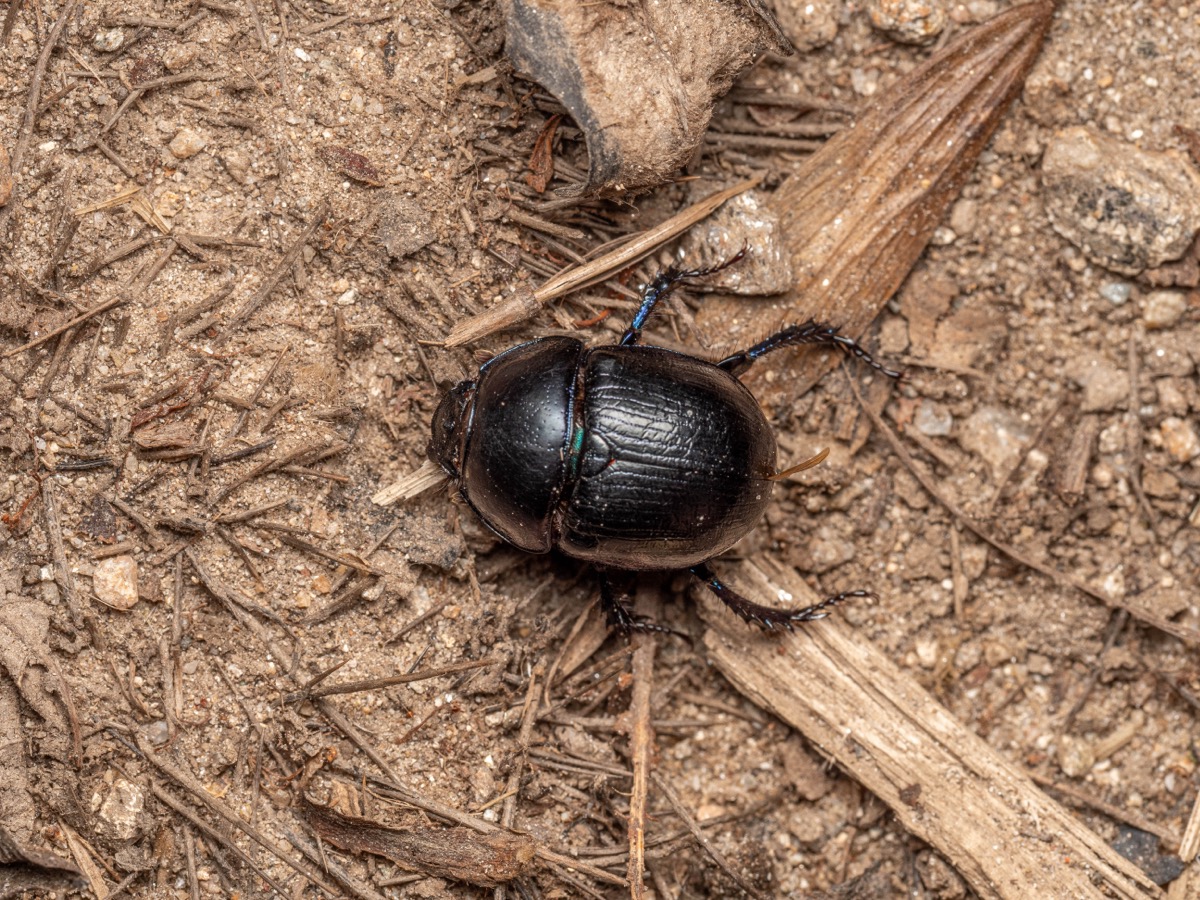The Geotrupidae – Dung Beetles
The Geotrupidae, commonly called “dung beetles” or “dor beetles”, are a family of beetles belonging to the order Coleoptera. These beetles are primarily known for their behavior of collecting and decomposing decaying organic matter, including animal dung. Here is a summary of the main characteristics and aspects of the Geotrupidae:
Characteristics
Collecting behavior:
Dung beetles are well known for their habit of collecting decaying organic matter, especially animal dung. They often roll this matter into compact balls, which they then transport to their nest for feeding or to lay their eggs.
Ecological role:
Dung beetles play a crucial role in ecosystems by breaking down decaying organic matter. By feeding on dung and other organic materials, they help recycle nutrients and maintain soil health.
Anatomy and appearance:
Geotrupidae generally have a robust and compact body, with variable coloration ranging from black to dark brown. Their elytra (hardened forewings) may sometimes bear distinctive patterns or markings.
Life cycle:
Dung beetles go through several stages of development, from egg to larva, pupa, and adult. The larvae usually develop inside dung balls or other decomposing organic matter. Adults later emerge to continue the life cycle.
Reproductive strategies:
Male and female dung beetles may cooperate to form dung balls and transport them to suitable locations. Eggs are often laid inside these balls, where the larvae develop by feeding on the organic matter.
Habitats:
Geotrupidae can be found in a variety of habitats, including meadows, woods, wetlands, and even deserts. They are present on every continent except Antarctica.
Symbiotic relationships:
Some dung beetles have developed symbiotic relationships with microorganisms that help them decompose organic matter more effectively.
Human interactions:
Dung beetles can have cultural and religious importance in some regions, where they are associated with cleanliness and the recycling of nature. They are also studied for their ecological role and their potential use in organic waste management.
Geotrupinae (subfamily)
Genus Anoplotrupes
Anoplotrupes stercorosus – Woodland Dor Beetle
| Order | Coleoptera |
|---|---|
| Family | Geotrupidae |
| Genus | Anoplotrupes |
| Species | Stercorosus |
| Common name | Woodland Dor Beetle |
| Identifier | Scriba |
| Year identified | 1791 |
| Protected | Not protected |
| IUCN category (2001-2003) | Not classified |
| Habitat | |
| Diet | |
| Color | |
| Antennae | |
| Pronotum | |
| Elytra | |
| Legs | |
| Range | Palearctic region |
| Min size | |
| Max size | |
| Period start | |
| Period end |

